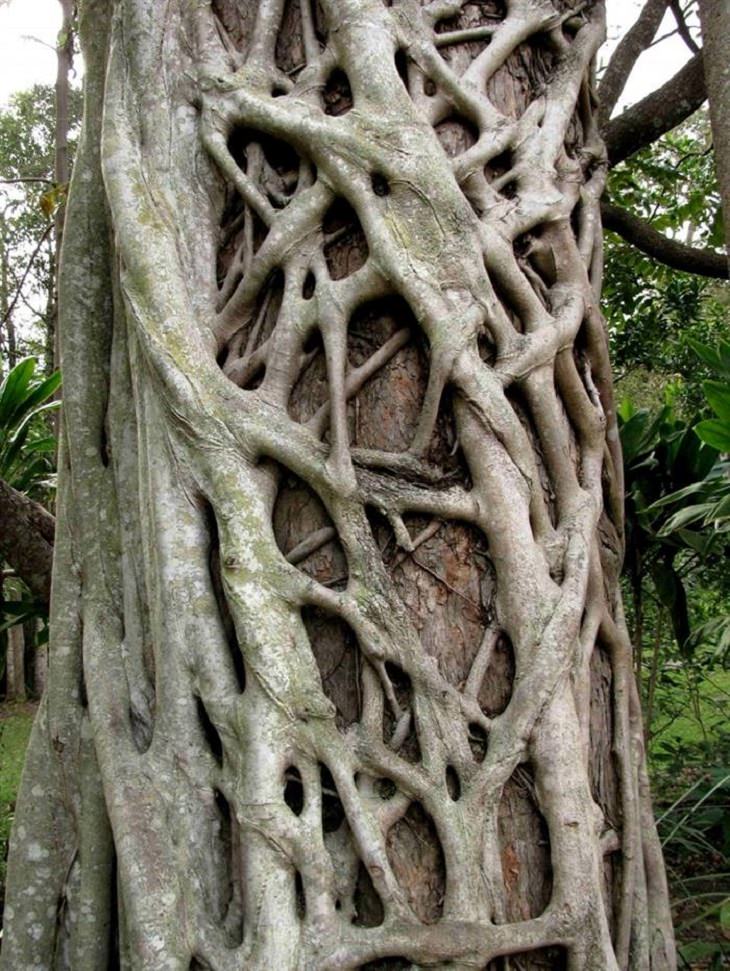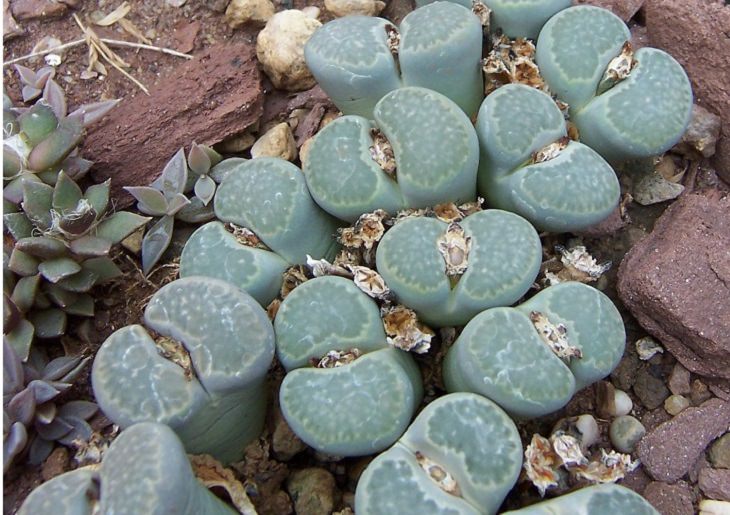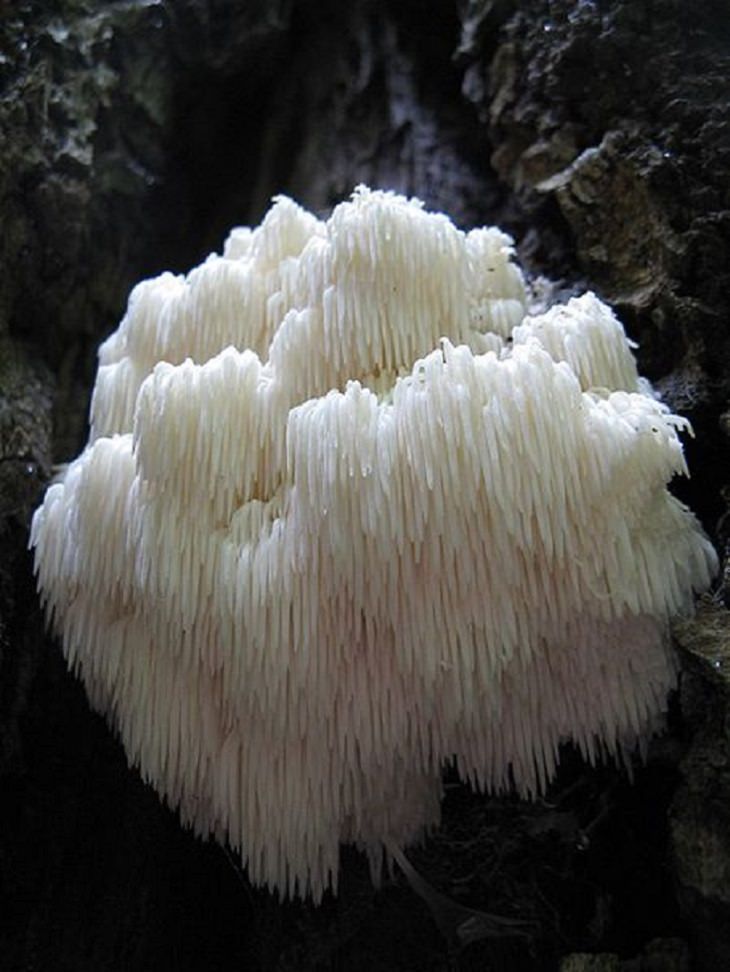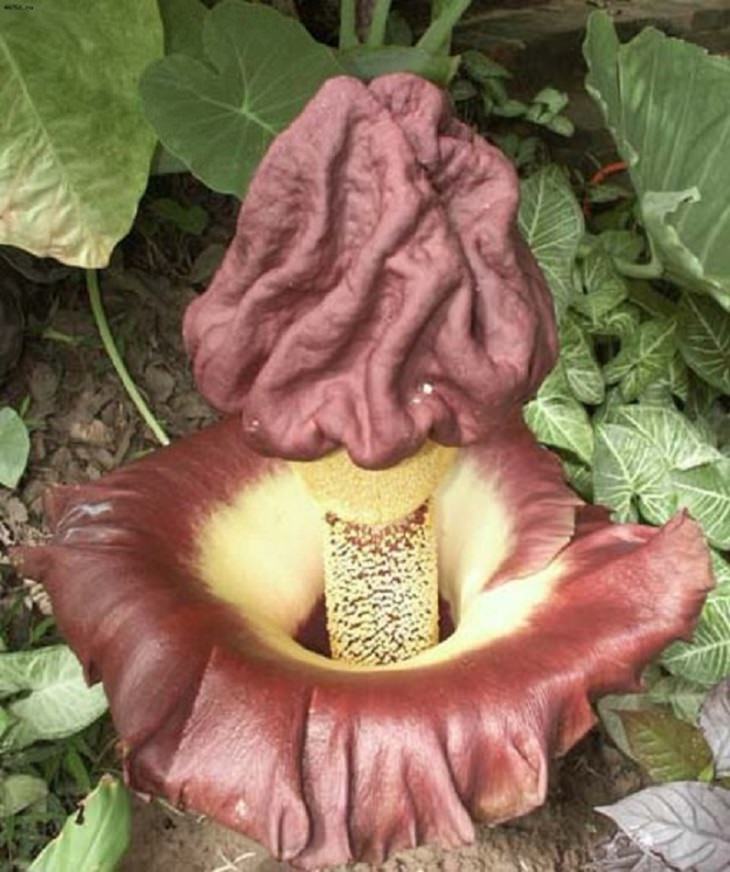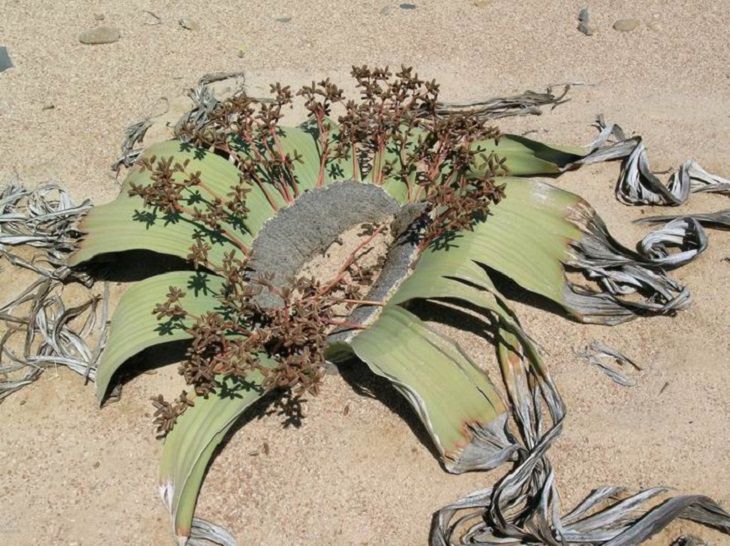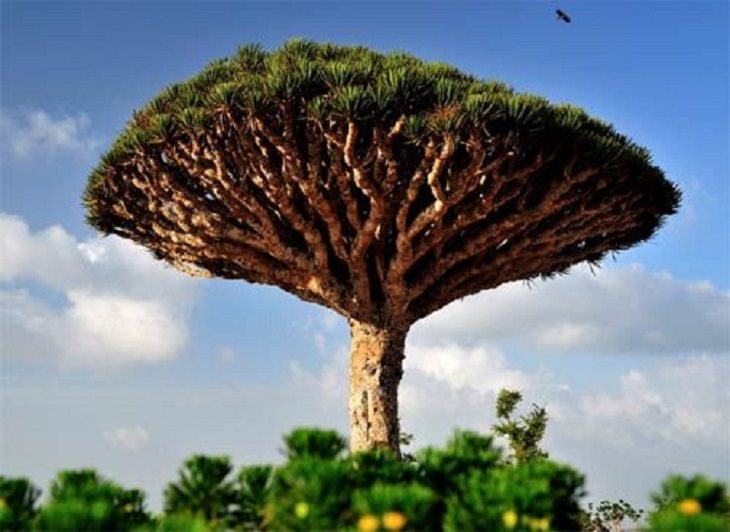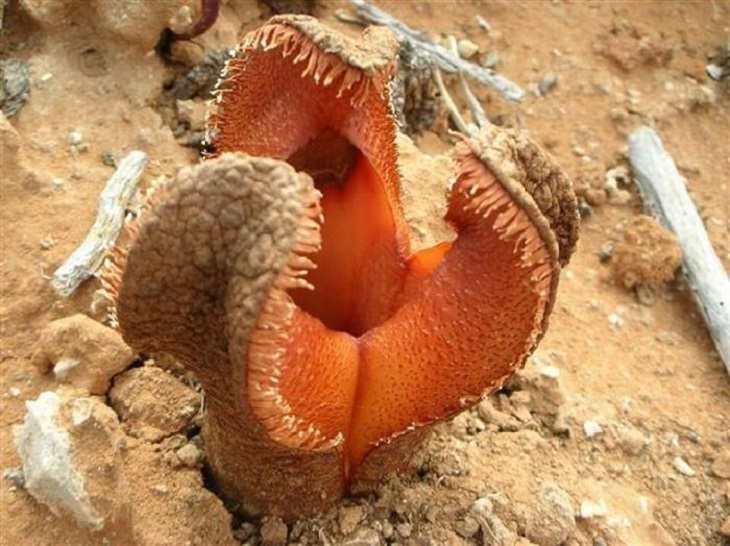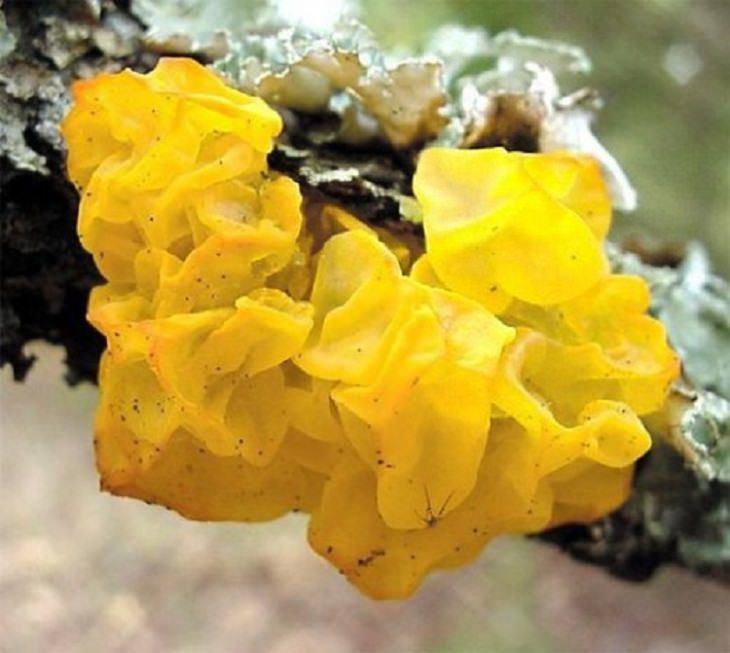Nature provides us with endless entertainment. Upon exploring caves, deserts, and forests, scientists have documented sights that look as if they came out of a science fiction movie. The strange and wacky ways plants protect themselves shows you how talented Mother Nature's creations can be. These extraordinary plants are stealthy, creative and very different from the garden variety you’re used to seeing.
1. Corpse Flower
Source
This rare 200-pound plant grows in the forests of Sumatra and is famous for its rotting corpse-like stench. While this plant looks like one giant flower, it’s actually comprised of thousands of small flowers, male and female. Besides its notorious stench, the Corpse Flower is also remarkable for its infrequent blooming cycle. It can take up to 7-10 years for a single bloom to occur, and when it does, the flower only lasts for about 24-48 hours before wilting.
2. Strangler Figs
Source
This is a killer tree that grows up and down other trees, choking them of sunlight and stealing their nutrients. The host tree often dies and the strangler remains with a hollow center. Strangler figs have a unique relationship with their environment, serving as keystone species in tropical forests. They provide a critical food source for a variety of animals, especially during times when other food sources are scarce.
3. Lithops Julli
Source
This southern African plant is colloquially called a pebble plant or living stone because it pretends to be a rock to avoid being eaten. Some species also produce small flowers. Lithops have evolved not only to mimic the appearance of stones to avoid predation but also to conserve water. Their structure allows them to store significant amounts of water, enabling them to survive in arid environments.
4. Bear's Head Tooth Mushroom
Source
This mop-head like mushroom grows on dead or dying tree trunks. It’s also edible and can stimulate nerve growth, help kill roundworms and fight cancerous cells. Beyond its potential health benefits, this mushroom is sought after for its culinary uses. Its texture and flavor are often compared to seafood, particularly crab or lobster, making it a popular choice for vegetarian and vegan dishes.
5. Wolffia Anguste
Source
Known as Watermeal or Duckweed, this free floating aquatic plant produces the world's smallest flower. It has no stem or leaves and produces flowers speedily, usually within 30-36 hours. Wolffia species are incredibly efficient in terms of space and resources, making them of interest for space travel and controlled environment agriculture. They have been studied as a potential food source for long-duration space missions due to their high growth rate and nutritional content.
6. Elephant Foot Yam
Source
A relative of the Corpse Plant, this plant is also renowned for its rotting corpse-like smell. Unlike the corpse plant, the Elephant Foot Yam is considered a delicacy in many parts of Southeast Asia where it is grown as a crop. Beyond its culinary uses, the Elephant Foot Yam is also valued for its medicinal properties. It is used in traditional medicine to treat various ailments, including asthma, arthritis, and abdominal pain.
7. Welwitschia
Source
Indigenous to the Namib Desert, this plant is considered a "living fossil" and reaches ages between 500-2000 years old. It has a short trunk and only produces two leaves. The two leaves of the Welwitschia plant grow continuously throughout its life, which can span over a millennium. These leaves can become several meters long and are often split and frayed by the desert winds, contributing to the plant's unusual appearance.
8. Dragon's Blood Tree
Source
Unique to the islands of Socotra in Yemen, this tree got its name from its sap, which is said to resemble Dragon's blood. The sap is used to make stimulants and toothpaste. The trees tend to huddle together to give their roots shade. The conservation status of the Dragon's Blood Tree is of concern due to its limited distribution and the impact of climate change. Efforts are being made to protect it and its unique ecosystem on the Socotra Archipelago.
9. Hydnora Africana
Source
This strange looking plant grows underground with only its flower popping out of the ground. Its unique form is designed to attract dung beetles to its poop-like smelling center, and help with pollination. This parasitic plant is not only bizarre in appearance but also in its mode of survival. It attaches itself to the roots of host plants to extract water and nutrients, having no chlorophyll of its own.
10. Witches' Butter
Source
This edible fungi grows on fallen or dead trees, and while it’s edible it has no taste. This fungus can reproduce by both sexual and asexual reproduction. It's also called Yellow Brain or Golden Jelly Fungus. In addition to its unique reproductive capabilities, Witches' Butter has been used in traditional medicine for its purported anti-inflammatory and moisturizing properties.
11. Rafflesia Arnoldis
Source
Another putrid breed, this distinct flower is the world's largest single flower without a stem, leaves or roots. Scientists have found it difficult to study because they spend most of their lives as small plants and transform into their unique form for only a few days. The conservation of Rafflesia arnoldii is challenging due to its specific habitat requirements and the fact that it relies on a particular vine of the genus Tetrastigma to survive, making its habitat conservation critical.


